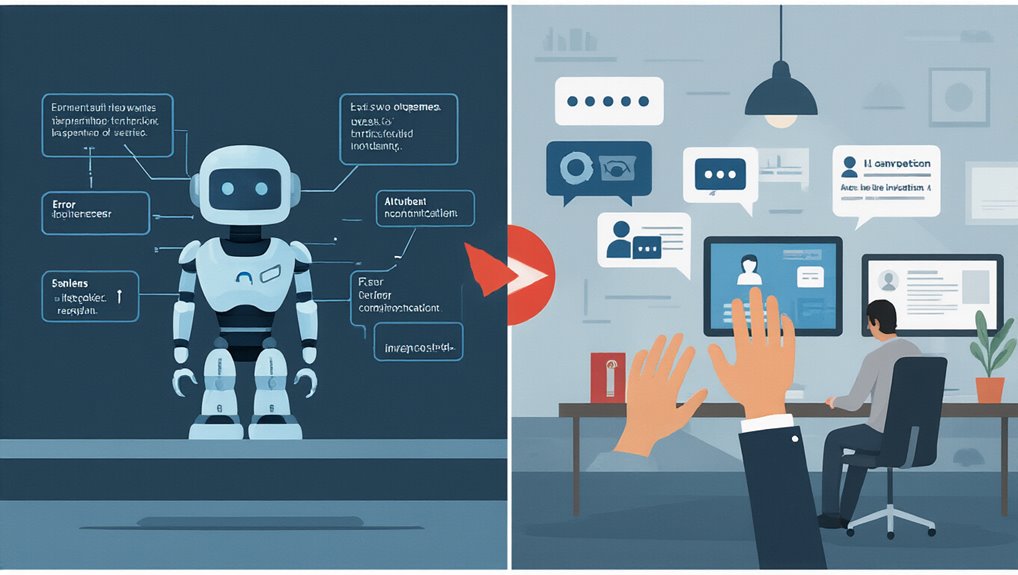Why are the very tools meant to streamline customer service actually undermining support teams’ effectiveness? As organizations adopt more technologies to enhance customer support, they’re inadvertently creating fragmented ecosystems that hinder rather than help.
The digital paradox: more support tools create disconnected experiences that frustrate customers and hamper agents.
The proliferation of disconnected platforms has led to siloed customer data, preventing support teams from accessing complete interaction histories across channels. This fragmentation results in longer resolution times, inconsistent responses, and frustrated customers who perceive brands as disjointed rather than unified.
The integration gaps between tools present significant challenges for support agents. When CRM systems don’t communicate with email platforms or chat interfaces, customer care executives lack visibility into the full customer journey. Establishing an integration center of excellence could prevent connector sprawl and ensure consistent standards across all customer-facing systems.
Consider that support agents regularly report negative customer experiences stemming directly from incomplete consumer data. These disconnections force customers to repeat information across channels, compounding their frustration with each interaction. Brands that struggle with poor data integration often miss valuable upselling opportunities while creating friction in the customer experience.
Overreliance on AI automation further complicates matters. While AI promises efficiency, 64% of customers would prefer companies avoid using it for customer service altogether. The statistics are troubling: 63% of customers report their last chatbot interaction failed to solve their problem, and 75% feel chatbots struggle with complex issues.
More concerning is that 85% of consumers believe their issues typically require human intervention. Security concerns also arise as these AI platforms may create data security vulnerabilities when handling sensitive customer information across multiple disconnected systems.
The consequences of these tool-related failures are severe. After just two negative experiences, 86% of consumers will abandon a brand. For 17% of US customers, a single poor interaction is enough to drive them away.
The solution isn’t adding more tools but consolidating and centralizing knowledge. Support teams need unified platforms that provide holistic customer information across all touchpoints.
Organizations must prioritize systems that enhance human capabilities rather than replace them, ensuring agents have the context and information needed to resolve issues effectively.






